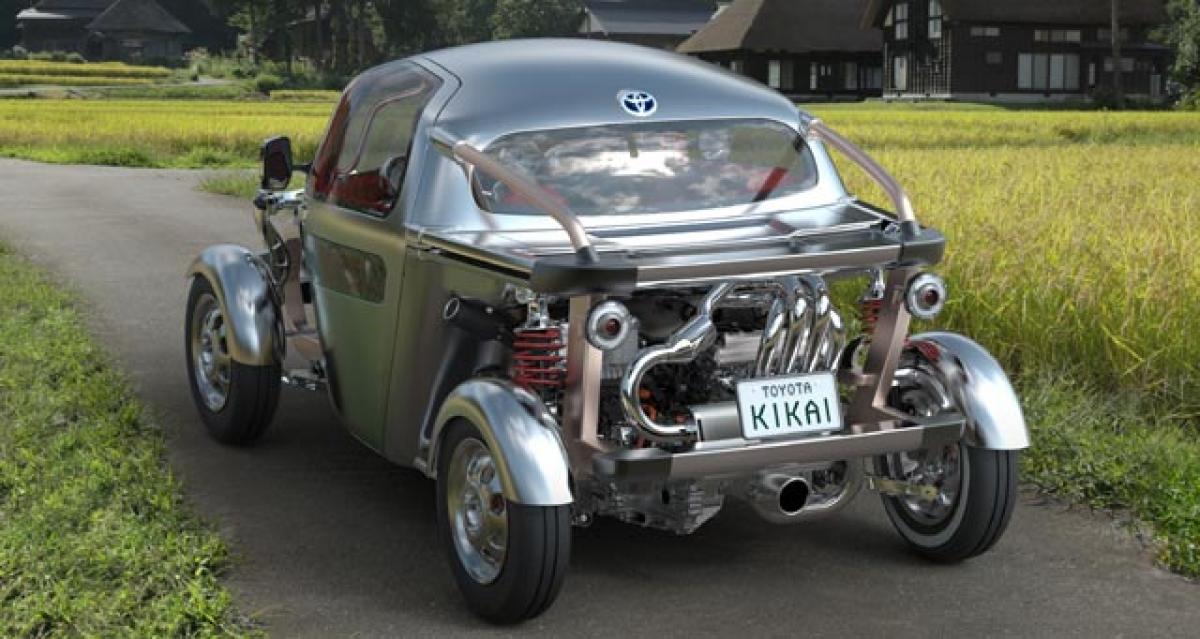Live
- WHO reports declining monkeypox cases in Congo
- CM Attends Kotideepotsavam on Kartika Purnima
- PKL Season 11: Raiding trio of Devank, Ayan, Sandeep help Patna Pirates rout Bengal Warriorz
- Food waste crisis fuels sustainable practices across APAC food & beverage industry: Report
- AI helps erase racist deed restrictions in California
- ATMIS completes third phase of troops' drawdown in Somalia
- PM Kisan Samman Nidhi scheme bringing smile to Nalanda farmers
- German economy forecast to lag eurozone growth until 2026
- CM Shinde orders stern action against hoarding of onions amid rising prices
- Protest rallies in Manipur against 'mass killing of 10 village volunteers'
Just In

Toyota KIKAI, making its European debut at the Geneva motor show, has been designed to explore the fundamental appeal of machines: their intricacy, mechanical complexity and motion.
Toyota KIKAI, making its European debut at the Geneva motor show, has been designed to explore the fundamental appeal of machines: their intricacy, mechanical complexity and motion.
As a true concept car, the Toyota KIKAI’s appeal is in a design which is simultaneously reliant on, and yet free from, the core concepts of the modern automobile. Toyota believes that as the products of human knowledge, creativity, dedication and craftsmanship, machines should also be objects of admiration.
KIKAI takes the machinery normally hidden beneath a vehicle’s bodywork, and reveals it. Throughout, the components on display have been detailed to celebrate the intricacy and mechanical elegance of its construction, whether simple or complex in nature.
With that in mind, the bodywork of the mid-engined concept has been kept to a bare minimum, simply enclosing the structural core of a central, three-seater cabin. Housed within exposed aluminium sub-frame members, all other components are uncovered; the vehicle’s inner workings becoming part of the exterior.
At the front the KIKAI’s radiator, steering system, brakes and cast aluminium front suspension members are all on display. At the rear the suspension members, brakes, fuel tank, chromed exhaust system and the notably compact packaging of Toyota’s full hybrid powertrain technology can be clearly seen.
The KIKAI’s hybrid system combines an electric motor with a 1.5-litre, four-cylinder Atkinson-cycle engine. The latter includes an electric water pump, a low-friction distribution chain, an intake manifold made of a composite material and a compact exhaust manifold.
As with all Toyota hybrids, the KIKAI stands out for its silent running, comfort and easy handling, particularly in urban areas where the hybrid system allows the car to run solely in electric mode or with a limited use of the combustion engine. The automatic transmission ensures a smooth drive, giving a comfortable and reassuring driving experience.
Sliding doors open to a three-seat cabin layout featuring a central driver’s seat, placing the driver at the heart of the car. The triangular seating layout creates a welcoming on-board communication space, whilst the use of unique, analogue-feel instrumentation continues the concept’s theme of celebrating the simple beauty of mechanical technology.
Expansive cabin glazing offers its occupants outstanding all round visibility as well as a novel and engaging visual dialogue with the machinery. For instance, the movement of the front suspension upper control arms can also be seen through the windscreen, and small windows by the driver’s feet offer a unique view of tyre and suspension movement. In an increasingly digital age, KIKAI actively encourages you to appreciate the beauty of automotive mechanical engineering.

© 2024 Hyderabad Media House Limited/The Hans India. All rights reserved. Powered by hocalwire.com







